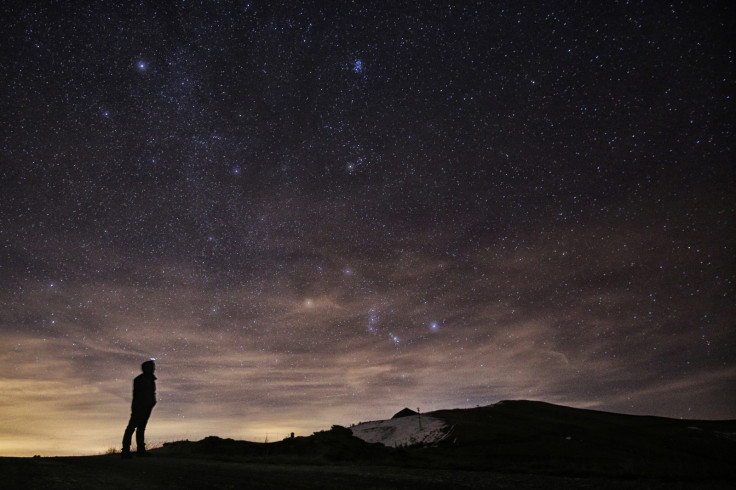How to find the best spot to see the Geminid meteor shower outdoors, or watch live online
Maximise your chances of seeing shooting stars outside or via live feeds from telescopes around the world.

The Geminid Meteor shower happens each year and is visible for up to two weeks. There's a chance of seeing them at night if you are lucky with the weather and have a clear sky.
However, this year there's the additional problem of natural light pollution: the peak of the shower is coinciding with the bright December supermoon. For your best chance of seeing the meteor shower in the UK or the US, see the boxes below for suggestions of some of the darkest and most promising spots for stargazing.
The Geminids are usually white or yellow, with a few appearing as blue or red. These meteors are rocky material from a space object called 3200 Phaeton.
The Geminids are made of rocky material that takes a while to burn up in the atmosphere, which makes them put on a particularly good display compared with other meteor showers.
Watch at home
For a warmer option, the Geminid Meteor shower will also be broadcast by Slooh, using live feeds from observatories at the Institute of Astrophysics of the Canary Islands, and from sites in the United Kingdom, Sweden, and Connecticut in the US.
You can go to Slooh.com to join and watch this live broadcast, snap and share your own photos during the event, chat with audience members and interact with the hosts, and personally control Slooh's telescopes.
Where is the best place to see a meteor in Britain?
London: The WaterWorks Nature Reserve in east London is a spot less affected by light pollution – a rarity in the capital. You can get there via Clapton and Leyton Midland Rd stations.
Birmingham: Warley Woods is west of the city centre and can be reached via the A456 Hagley Road.
Manchester: Heaton Park is the largest park in Greater Manchester. It is accessible by tram or bus from the city centre, or via the M60 motorway.
Glasgow: The Mugdock Country Park can be reached by bus from the city centre.
Cardiff: The Brecon Beacons Dark Sky Reserve was the first destination in Wales to be granted special protection as an international dark sky reserve.
Belfast: Oxford Island National Nature Reserve hosted events for the BBC Stargazing Live in 2012 and 2013.
Where is the best place to see a meteor in the US?
Pennsylvania: Cherry Springs State Park is a gold-certified International Dark Sky Park and its night sky viewing area is open 24/7.
California: Death Valley National Park is a gold-certified International Dark Sky Park, with very little artificial light within its 3.4 million acres. Angeles National Forest in Los Angeles County, southern California, is also a good spot.
Philadelphia: The Tuckahoe State Park is two hours out of the city.
Arizona: The Kitt Peak National Observatory, near Tucson, is home to the world's largest collection of optical telescopes. The clear, dark skies of the Sonoran Desert are also a firm favourite with astronomers.
Utah: The night sky at Bryce Canyon is so dark it is possible to see 7,500 stars on a moonless night.
Illinois: The Hickory Knolls Discovery Centre in St Charles is a nature conservatory and a Dark Sky Park.
New Mexico: Chaco Culture National Historical Park is a great location to try and spot the Delta Aquarids.
Texas: The Big Bend National Park in west Texas has gone to some lengths to retain its International Dark Sky status, including by changing the lighting to shielded LEDs.
© Copyright IBTimes 2025. All rights reserved.






















